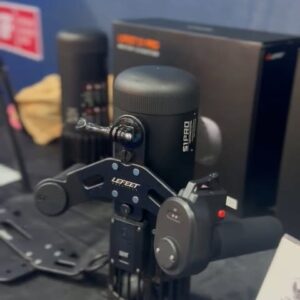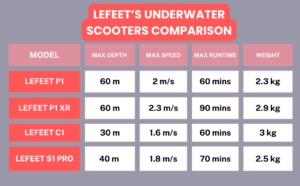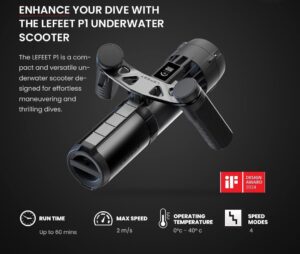Underwater drones application in the Emirates is rapidly transforming industries and enhancing marine research. These innovative underwater robotics support maritime security, oil and gas inspections, marine conservation, underwater exploration, and more.
Exploring Underwater Drone Applications in the Emirates
Underwater drones, also known as ROVs (Remotely Operated Vehicles) and AUVs (Autonomous Underwater Vehicles), are advanced robotic systems designed for subsea operations. Our product range includes the highly reliable Chasing M2 S, the versatile Chasing Pro Max, and the compact Chasing Gladius Mini. These state-of-the-art devices can be controlled remotely or operate autonomously, making them ideal for deep-sea exploration, industrial inspections, and environmental research.
Maritime Security and Customs Inspections
The UAE invests heavily in coastal security, port surveillance, and underwater threat detection. Subsea drones play a key role in inspecting ships, detecting threats, and preventing illegal activities.
In August 2020, Dubai Customs deployed a Remotely Operated Vehicle (ROV) to strengthen its marine inspection capabilities. The mini-submarine drone, capable of moving at 15 km/h, is equipped with a 4K HD camera that provides real-time underwater imaging and high-resolution photographs. This technology helps officers inspect ship hulls, cargo holds, and underwater compartments for hidden contraband, narcotics, and illegal shipments. The drone’s 30-meter operational range allows it to search beneath vessels—a tactic frequently used by smugglers and human traffickers.
By automating vessel inspections, Dubai Customs has reduced manual inspection times and enhanced border security. This reflects the UAE’s commitment to using cutting-edge marine robotics to combat smuggling and maritime crimes.
The UAE Invests Heavily In Coastal Security
In August 2020, Dubai Customs deployed a Remotely Operated Vehicle (ROV) to strengthen its marine inspection capabilities. The mini-submarine drone, capable of moving at 15 km/h, is equipped with a 4K HD camera that provides real-time underwater imaging and high-resolution photographs. This technology helps officers inspect ship hulls, cargo holds, and underwater compartments for hidden contraband, narcotics, and illegal shipments. The drone’s 30-meter operational range allows it to search beneath vessels—a tactic frequently used by smugglers and human traffickers.
By automating vessel inspections, Dubai Customs has reduced manual inspection times and enhanced border security. This reflects the UAE’s commitment to using cutting-edge marine robotics to combat smuggling and maritime crimes.
With 30% of the UAE’s GDP linked to the oil and gas sector, offshore platform maintenance and underwater pipeline inspections are critical. ADNOC (Abu Dhabi National Oil Company) has integrated subsea ROVs to conduct non-invasive inspections, reducing the need for human divers in hazardous areas.
Deepwater drones help detect pipeline corrosion, leaks, structural weaknesses, and marine growth, ensuring proactive maintenance. A 2023 ADNOC report revealed that using ROVs in offshore inspections cut costs by 25% and increased workplace safety.
Marine Research and Environmental Monitoring
The UAE’s waters host diverse marine species, including Hawksbill turtles, dugongs, whale sharks, and coral reefs. To monitor marine ecosystems and track species populations, researchers deploy waterproof underwater drones.
Organizations like Environment Agency – Abu Dhabi (EAD) and NYU Abu Dhabi’s Marine Biology Program use AUVs and underwater sensors to:
- Conduct coral reef surveys and detect signs of coral bleaching.
- Track migratory patterns of marine species such as sea turtles and dugongs.
- Collect environmental data on ocean temperature, water salinity, pollution levels, and underwater noise pollution.
In 2022, EAD deployed autonomous underwater vehicles (AUVs) to survey over 200,000 square meters of coral reefs in the Arabian Gulf. The data helped scientists develop marine conservation strategies and protect fragile underwater habitats.
Underwater Archaeology and Cultural Heritage
The UAE’s maritime history spans thousands of years. Autonomous underwater drones assist archaeologists in exploring shipwrecks, ancient artifacts, and lost trade routes.
The Sharjah Archaeology Authority has used ROVs to document sunken pearling ships from the 19th century. In 2021, a UAE-based research team used an underwater drone equipped with 3D sonar mapping to digitally reconstruct a historic vessel wreckage near Sir Bani Yas Island. High-resolution imaging allowed researchers to preserve maritime history without disturbing fragile artifacts.
Underwater Drones For Search and Rescue Operations
Submersible drones play a crucial role in emergency response and disaster recovery. The UAE’s National Search and Rescue Center (NSRC) uses autonomous ROVs to locate:
- Sunken vessels and aircraft wreckage.
- Missing persons lost at sea.
- Maritime debris.
In 2023, after a ship collision near Jebel Ali, underwater drones equipped with sonar sensors identified the wreckage within 48 hours, aiding rescue teams. Their infrared thermal imaging and hydroacoustic sonar technology make them invaluable in low-visibility conditions.
Industrial Inspections: Bridges and Offshore Platforms
Beyond oil rigs, underwater drones inspect critical infrastructure such as bridges, ports, desalination plants, and offshore wind farms. They detect:
- Structural weaknesses in underwater pillars.
- Erosion and biofouling damage on submerged structures.
- Underwater obstructions affecting port operations.
Dubai’s infrastructure teams use ROVs with LiDAR mapping technology for bridge safety assessments, reducing the need for manual diving inspections in high-risk environments. This improves worker safety and streamlines maintenance workflows.
Aquaculture and Fisheries Management
The UAE is expanding its aquaculture sector to boost food security. Fish farms and mariculture centers use underwater drones to:
- Monitor fish health and aquatic biodiversity.
- Inspect offshore fish cages and underwater enclosures.
- Track ocean currents and water quality fluctuations.
In 2022, the Ministry of Climate Change and Environment (MOCCAE) introduced ROVs in fish farms along the eastern UAE coastline. This reduced manual inspections by 60%, optimizing sustainable aquaculture practices.
Tourism and Marine Exploration
Underwater drones are transforming marine tourism and eco-tourism experiences. Resorts like Atlantis The Palm and The Ritz-Carlton Ras Al Khaimah provide guests with live drone footage of marine life and artificial reefs.
Diving operators in Fujairah and Abu Dhabi now offer ROV-guided underwater tours, allowing non-divers to explore sunken wrecks and coral reefs from a boat. This makes marine adventure tourism accessible to a wider audience.
Future Trends in Underwater Drones Application in the Emirates
As technology advances, the future of underwater drones application in the Emirates looks promising. Emerging trends include:
- Enhanced AI Integration: Advanced artificial intelligence will improve object recognition and autonomous navigation for underwater drones, making data collection more efficient.
- Expanded Sensor Technologies: New sensors will provide more precise environmental and structural data, which is crucial for both industrial inspections and marine research.
- Sustainable Operations: With an increasing focus on environmental conservation, underwater drones will play a pivotal role in monitoring and preserving fragile marine ecosystems.
- Interoperability with Other Systems: Future systems will integrate with satellite technology and IoT devices to provide comprehensive real-time monitoring of the UAE’s maritime environment.
- Increased Commercial Adoption: Beyond government and research, private sectors in tourism, energy, and infrastructure are expected to adopt underwater drone technology to enhance operational efficiency and safety.
Our product lineup, including the Chasing M2 S, Chasing Pro Max, and Chasing Gladius Mini, is continuously evolving to meet these emerging trends, ensuring our customers stay at the forefront of marine robotics innovation.
Why the UAE is Investing in Underwater Drones
The UAE’s focus on smart technology, sustainability, and coastal protection is driving the adoption of underwater robotics. These submersible vehicles:
- Enhance operational efficiency by reducing manual labor costs.
- Improve risk management by minimizing human exposure in hazardous environments.
- Support marine biodiversity research by providing high-resolution ecological data.
- Advance ocean mapping technology to improve coastal management and disaster preparedness.
Navigating the Future of Underwater Innovation
Underwater drones are transforming marine industries in the United Arab Emirates. From securing ports and offshore assets to preserving marine ecosystems, their applications continue to expand. With advancements in AI, hydrographic surveying, and autonomous navigation, the UAE remains at the forefront of marine robotics innovation. Our cutting-edge products—Chasing M2 S, Chasing Pro Max, and Chasing Gladius Mini are designed to empower your operations, delivering unparalleled performance and reliability.



